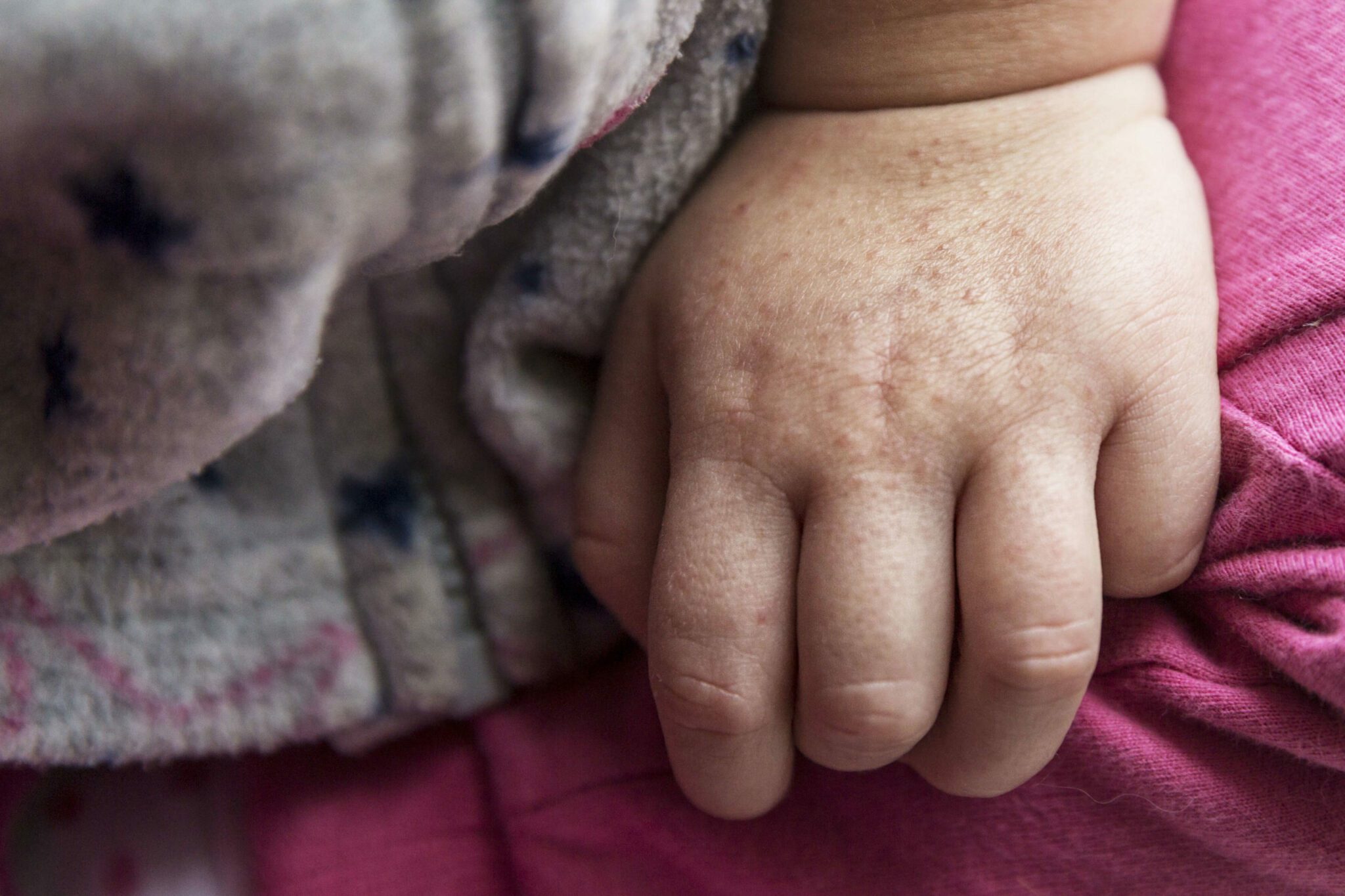Scarlet Fever in Infants and Children

Scarlet fever is an infection caused by a bacteria called Group A Streptococcus. This bacteria is the same bacteria that causes strep throat. While scarlet fever was previously a serious childhood illness, modern antibiotics have made the condition highly treatable. However, it’s important to seek treatment as quickly as possible to prevent scarlet fever from becoming the more dangerous rheumatic fever.
The Group A Strep bacteria gives off a toxin that some children are immune to, while others are affected. This explains how some children can have strep throat and not get scarlet fever while others do. The condition most commonly affects children between the ages of 5-12, according to the Centers for Disease Control and Prevention.
While the condition is predominantly passed from person to person through direct contact with contaminated items, or by inhaling droplets from an infected person who sneezes or coughs. However, in rare instances, a child can become infected after experiencing a skin infection due to strep bacteria, like impetigo.
If your child is sensitive to the Group A Strep toxin, he or she will have strep throat symptoms, and in 1-2 weeks might develop a rash. This rash may appear like a sunburn, have a rough, sandpaper-like texture, and typically begins on the face and neck before spreading to other areas of the body. The rash can itch and typically turns white when pressed on.
Additional symptoms associated with scarlet fever include:
- Appetite loss
- Body aches
- Chills
- Fever higher than 101 degrees
- Nausea
- Red, sore throat
- Swollen neck glands
- Tonsils that appear white-coated, red or spotted with yellowish pus
- Vomiting
Seek emergency treatment if your infant is under 3 months of age and has a rectal temperature of 100.4 degrees or higher. Children ages 3-36 months with a rectal temperature of 102 degrees or higher should also receive emergency treatment.
If a doctor diagnoses your child with scarlet fever, he or she would prescribe antibiotics. These can kill the bacteria and prevent them from multiplying. Taking a full course of antibiotics is important to ensure the bacteria are fully eradicated.
If scarlet fever is left untreated, it can progress to more serious medical conditions. In addition to rheumatic fever, which can cause chronic inflammation of the heart, skin, joints and brain. Other complications include:
- Arthritis
- Ear infections
- Glomerulonephritis, a severe kidney infection
- Pneumonia, an infection of the lungs
- Skin infections
- Throat abscesses
In addition to providing antibiotics, you can take steps to ensure your child is comfortable. These include providing cool liquids to prevent dehydration, and keep your child dressed lightly to prevent the fever to get very high. If your child’s symptoms do not improve two days after treatment, call your child’s pediatrician to be re-evaluated.
Sources:
- Centers for Disease Control and Prevention
- Scarlet Fever: A Group A Streptococcal Infection.
KidsHealth - About Scarlet Fever.
MayoClinic.com - Scarlet Fever.
PubMed Health - Scarlet Fever.
University of Minnesota Amplatz Children’s Hospital - When Your Child Has Scarlet Fever.
Powered by Bundoo®










